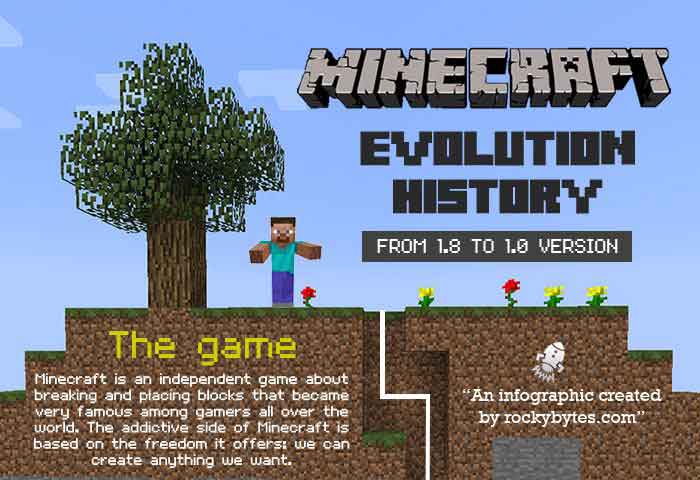The History and Business behind Minecraft
Getting Started with Minecraft
When Minecraft was first released in its beta form, it offered a unique and innovative gameplay experience unlike any other game at the time. While early versions had some limitations and rough edges compared to the final product, players were captivated by its simple yet versatile sandbox gameplay. You could craft tools and build virtually anything you imagined. Many early fans enjoyed experimenting with the basic mechanics and seeing how far they could push the boundaries of what was possible in this new digital world. Over time, the developers listened closely to feedback and continuously improved the game.
Expanding to New Platforms and Editions
As Minecraft grew rapidly in popularity, the developers knew they had to expand its availability to more players. They ported the game to mobile devices and launched the Pocket Edition on Android and iOS. While less feature-complete than the PC version initially, it opened up Minecraft to an even larger audience. Later, they unified all platform versions into a single cross-platform codebase called Bedrock Edition. Now players on different devices could interact and play together easily. The popularity of Minecraft grew exponentially with these expanded platform options, finding new fans all over the world.
Sustaining Development through Paid Downloads
While going multi-platform helped Minecraft reach new heights, it also introduced business challenges for sustaining ongoing development costs. The original developers, Mojang, realized they couldn’t rely solely on one-time purchases forever. They needed recurring revenue to keep a large team employed improving and expanding Minecraft for years to come. This led them to transition all editions except the original Java version to a paid app model requiring purchases or in-app transactions. For new players, downloading Bedrock Edition on mobile or console now costs money up front. Existing owners received the updates for free as promised originally. This dual model allows veterans tokeep playing as usual while attracting new players through reasonable purchase prices. It has proven very effective for supporting Mojang’s continued commitment to regularly updating one of the most popular and beloved games ever made.
Monetizing Player Creativity with Texture Packs
Part of Minecraft’s enduring allure comes from the boundless creativity of its community. Players enjoy designing their own creations but also customizing the game’s visuals. To facilitate and reward this, Mojang launched an in-game store for buying and selling customizable texture packs and concept maps. Content creators can now sell their works, with proceeds shared between Mojang and the creators. Meanwhile, players gain an huge catalog of additional styles and worlds to experience. It’s a true win-win that fosters an economy around player artistry, all without compromising the core game. These optional purchases have become an important secondary revenue stream while enriching the game with community touches.
Preserving Creative freedom on Java Edition
While business needs drove monetizing other editions, Mojang was careful not to compromise the original vision and free form experience on Java. They continue offering it as a one-time purchase without additional costs or restrictions. Purists can build and play exactly as intended originally. Downloadable player creations also remain freely available through third party launchers and sites. Mojang recognizes preserving this carefree form holds value for some. By keeping Java Edition untouched commercially but expanding options on Bedrock, they balance business responsibilities with honoring Minecraft’s roots. Both “sides” are accommodated, a testament to Mojang’s deft long term stewardship of one of gaming’s biggest franchises.
Constant Innovation despite Age
Over a decade since Minecraft’s humble launch, it remains one of the best selling and most influential games ever made. Yet rather than resting on past success, Mojang sustains a breakneck update schedule. Major annual updates introduce vast new biomes, mobs, blocks, mechanics and features to explore. The team draws inspiration from player feedback and brings radical evolutions like the combat overhaul or the buzzworthy Nether update. It’s remarkable they can still find novel ways to reinvent Minecraft after so many years. This dedication to constant evolution ensures it stays vital and relevant for new generations. Whether with technical advances or visionary new content, Minecraft’s future remains bright thanks to Mojang’s unflagging innovative spirit.
In Summary
Over its lengthy history thus far, Minecraft has succeeded through many reinventions while always respecting its roots. It started as a simple unique survival crafting experience and grew exponentially through platform expansions and an excellent business model balancing commercial needs with creative openness. An economy fostering the vibrant community amplifies enjoyment for all. Most impressively, Minecraft has proven itself an ever-evolving powerhouse by staying on the cutting edge of gaming trends despite its age. Under Mojang’s devoted leadership, Minecraft’s best days clearly still lie ahead as both a commercial and cultural phenomenon. Its future remains limitless because its heart remains firmly in its adventurous, resourceful players and their boundless imaginations.

